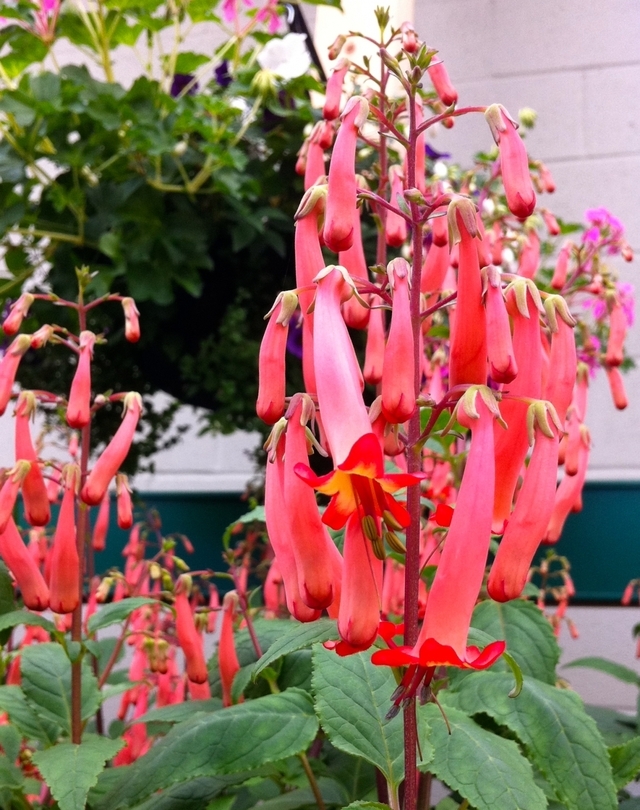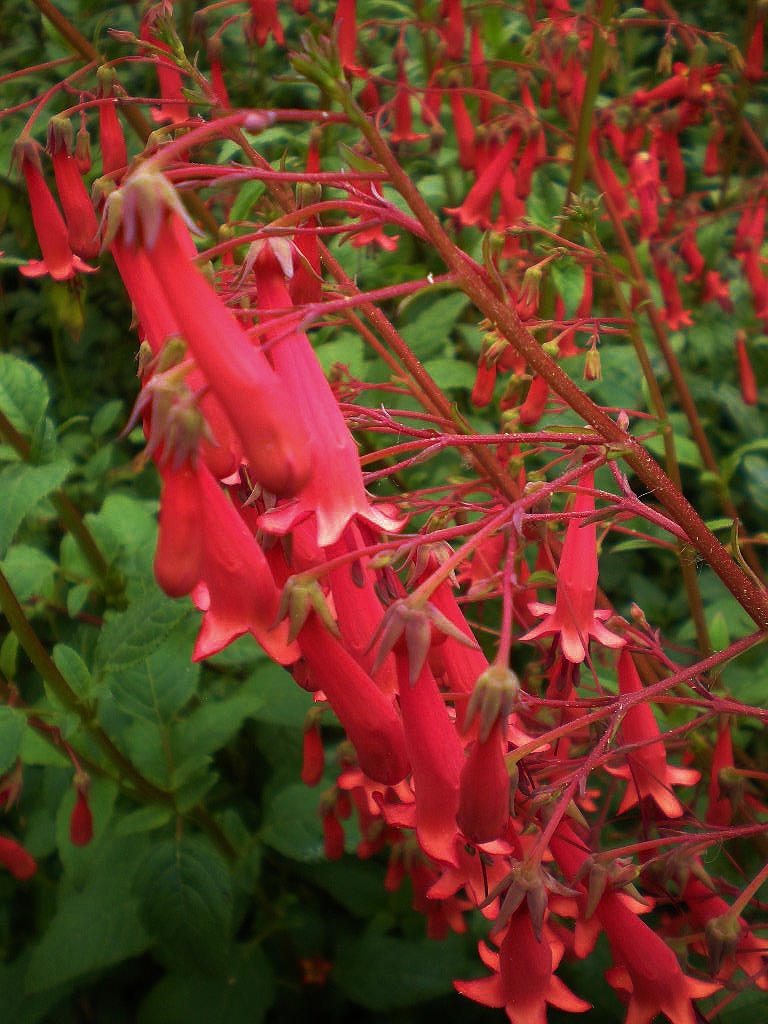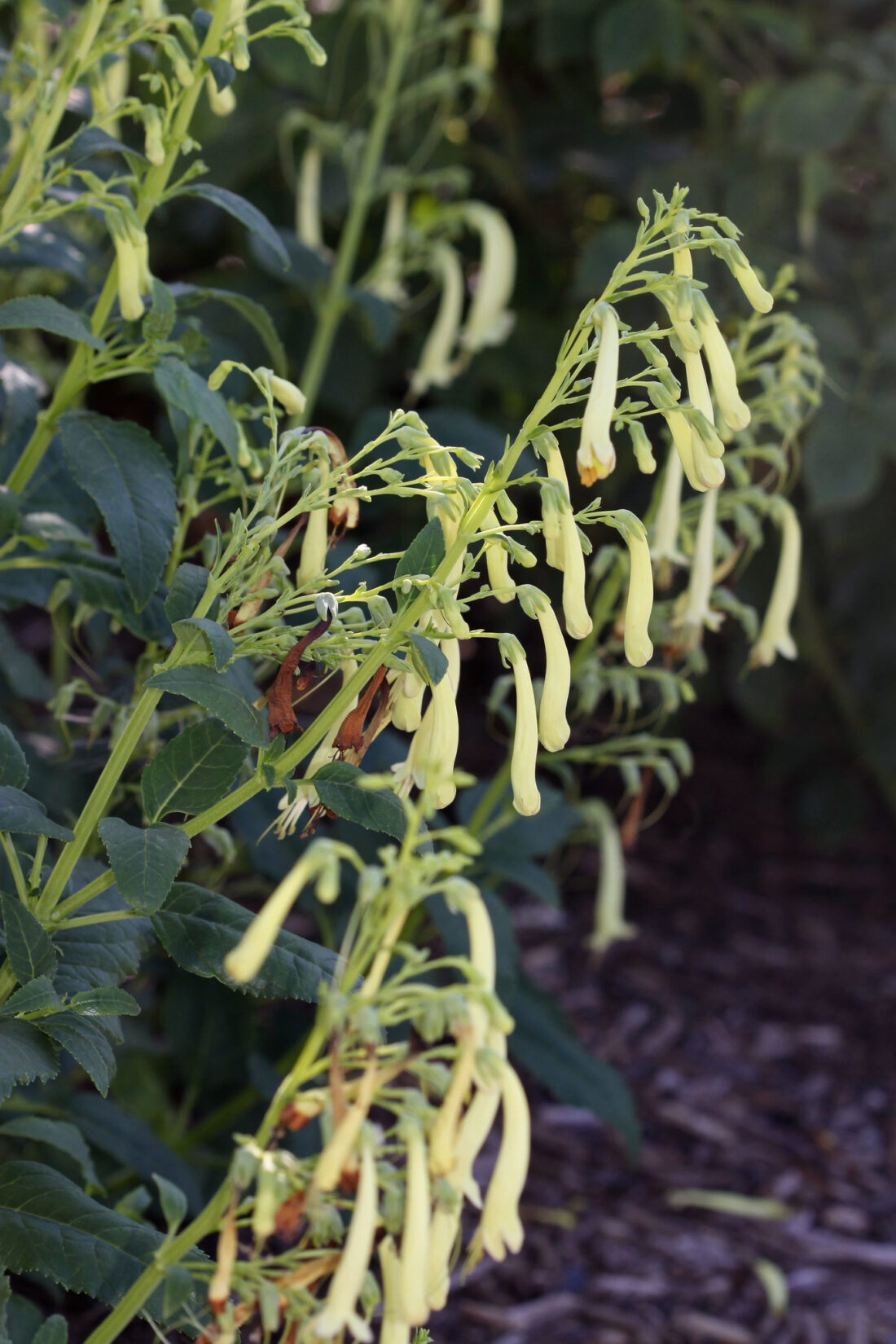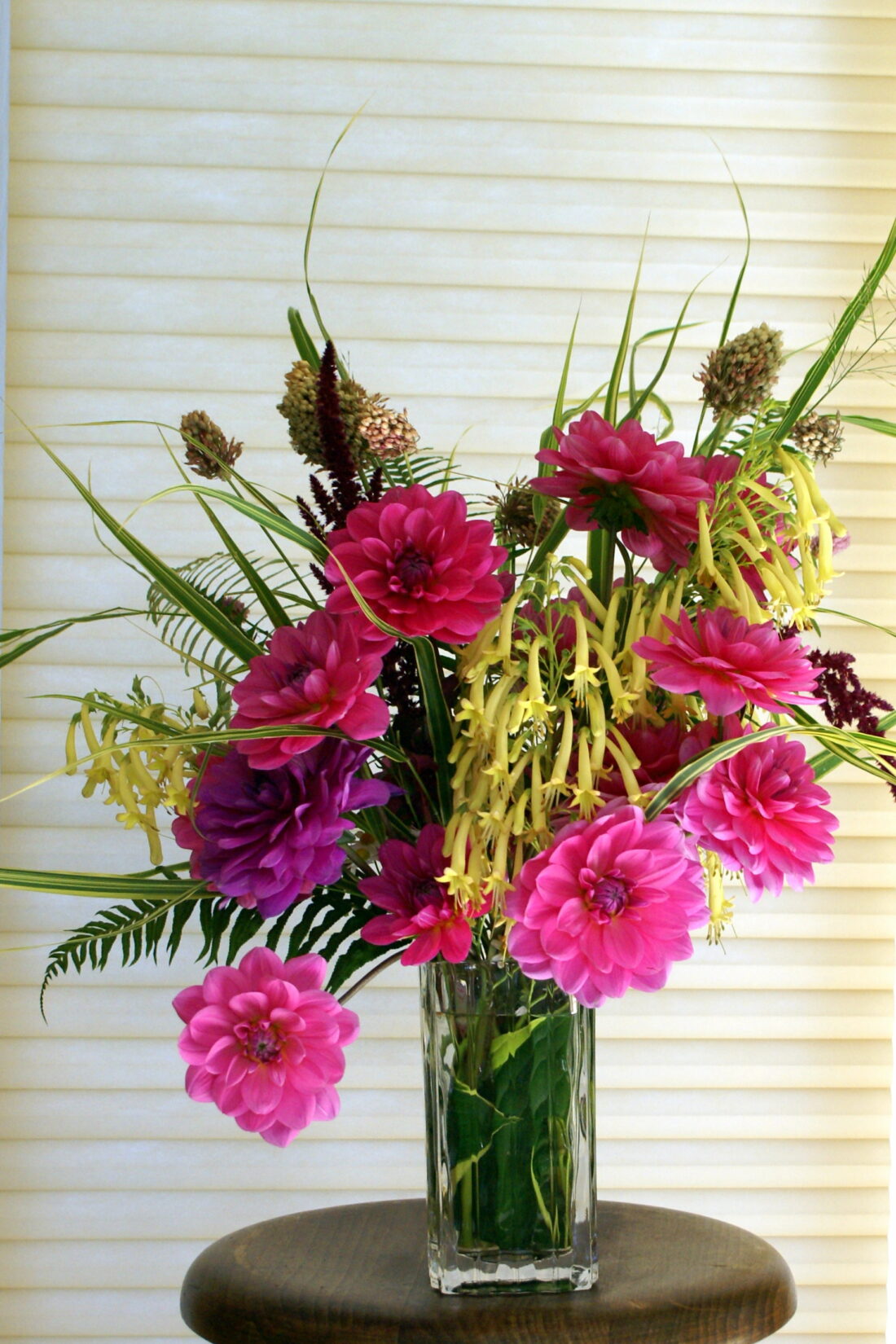It feels great to be home. For the past week and a half, I’ve been on the road between Maine and Pennsylvania, Boston and Denver. Now, I’m back—jetlagged, but happy to be home with my family in this wonderful Maine summer.
This morning, I took my usual first-day-back ritual: a slow walk through the garden, coffee in hand, mentally cataloging everything that happened while I was away. The plants at Coastal Maine Botanical Gardens have clearly embraced the summer warmth, growing with an enthusiasm that makes the garden feel fuller, wilder, and alive with color.

A Skeptical Bet on Phygelius
I’ll admit, I’m always a bit skeptical when introducing a new plant en masse. It’s one thing to try something novel in a tucked-away corner of the garden, but another to commit to a large-scale planting. This year, one of my bigger leaps of faith was with Phygelius x rectus, commonly known as Cape fuchsia.
Native to South Africa, Phygelius doesn’t exactly scream “Maine-hardy.” Our summers are cool and moist, a far cry from its natural habitat. But because this is our year of focusing on pollinators, I thought it was worth the risk. Hummingbirds reportedly love them, and if they lived up to their reputation, they could be a spectacular addition to the garden’s summer tapestry.
Before I left on my trip, the Phygelius were just starting to bloom. Now, 10 days later, they’ve exploded into color. And they’re spectacular.

Why Phygelius Deserves More Attention
They may be somewhat small in stature (18-24″ in height) but the bright red flowers are just what the garden needs. The 2″ nodding, tubular flowers are borne on terminal spikes. Despite its common name, Cape fuchsia isn’t a true fuchsia (Fuchsia spp.) at all—it’s actually more closely related to foxgloves (Digitalis). That lineage shows in its striking, tubular flowers, which dangle in elegant, nodding spikes from upright stems.
The cultivar we planted en masse is ‘Devil’s Tears’, reportedly the truest red of all the available varieties. The deep scarlet blooms glow against the lush green foliage, and the long necked flowers are a magnet for hummingbirds. Even better? They’ll keep blooming right up until frost, offering an impressive five-month-long display in our climate.
The Practical Side: Growing Cape Fuchsia
If you’re considering Phygelius for your own garden, here’s what I’ve learned so far:
- Sun & Soil: They thrive in full sun to part shade and need well-draining soil. They prefer consistent moisture but hate sitting in soggy ground. Think of them like foxgloves—too much wet, heavy soil in winter, and they won’t come back.
- Hardiness: While technically a perennial in USDA zones 7–10, Phygelius can survive in colder climates with some protection. Here in zone 6a, it’s a dice roll. This past winter, temperatures dropped to -7°F, and none of our plants made it through. But after two brutal winters in a row, I’m holding out hope that this year will be kinder.
- Growth Habit: Plants reach 18–24 inches tall, with a bushy, clumping habit. Given time and a milder winter, they’ll spread into larger colonies, creating a lush, semi-tropical effect.
- Pollinator Power: If you want a guaranteed hummingbird magnet, Phygelius is a sure bet. The bright red tubular flowers are custom-built for their long beaks. Butterflies and bees seem less interested, but the hummingbirds are obsessed.

Cape Fuchsia in the Garden: How to Use It
Phygelius bridges an interesting design gap in the garden. It has a long bloom time, a somewhat shrubby growth habit, and an exotic, foxglove-like flower shape. Here are a few ways to use it effectively:
- In Pollinator Borders: Plant it alongside other hummingbird-friendly flowers like Salvia guaranitica, Agastache, and Penstemon.
- Mixed Perennial Beds: Pair with perennials like Echinacea, Coreopsis, and Nepeta for a long-blooming, drought-tolerant display.
- Containers & Raised Beds: In colder climates where overwintering in the ground is risky, try growing Phygelius in containers that can be moved to a sheltered spot in winter.
- Tropical or Exotic-Themed Plantings: Its bold color and long flowering time make it a good companion for cannas, dahlias, and banana plants in a tropical-style garden.

Are You Growing Phygelius?
I’m still watching to see how this experiment unfolds. If we get a milder winter, I’d love to see how these plants bulk up over time. But for now, I’m impressed.
Have you grown Cape fuchsia in your garden? If so, which cultivars? And—more importantly—are you as in awe of them as I am this year?
– Rodney
Images: plantify.co.uk, Bradner Gardens Park
I have two hummingbirds that have staked out parts of the garden and I have a cape fuchsia for each…both plants get a lot of love. I am not as found the color red in my garden, but life does seem to be a compromise.